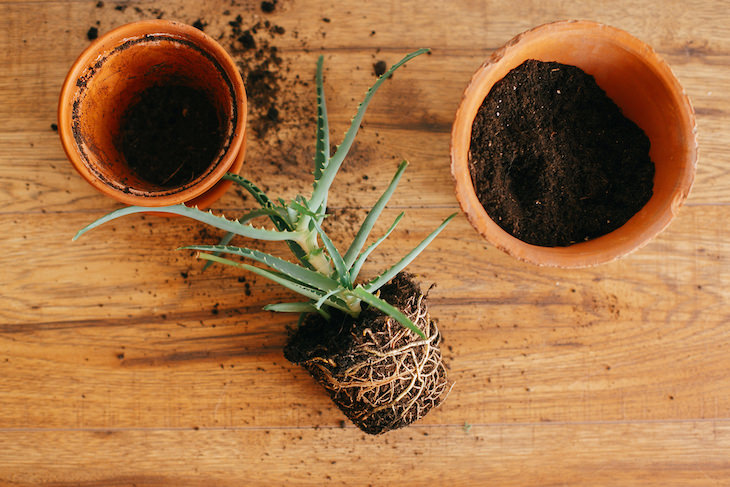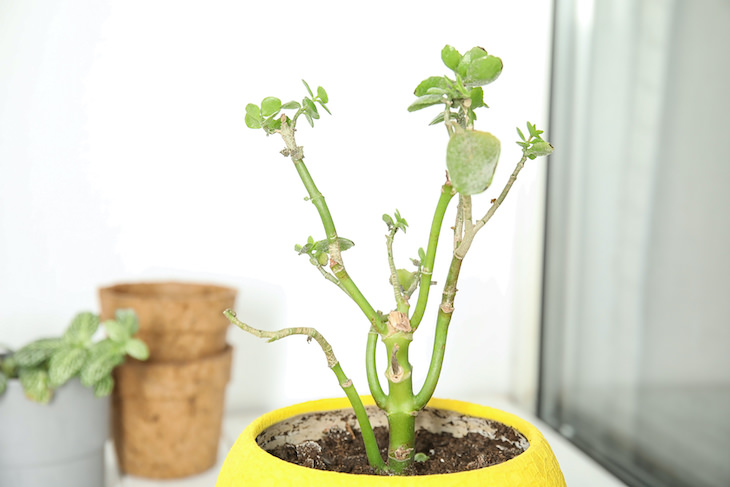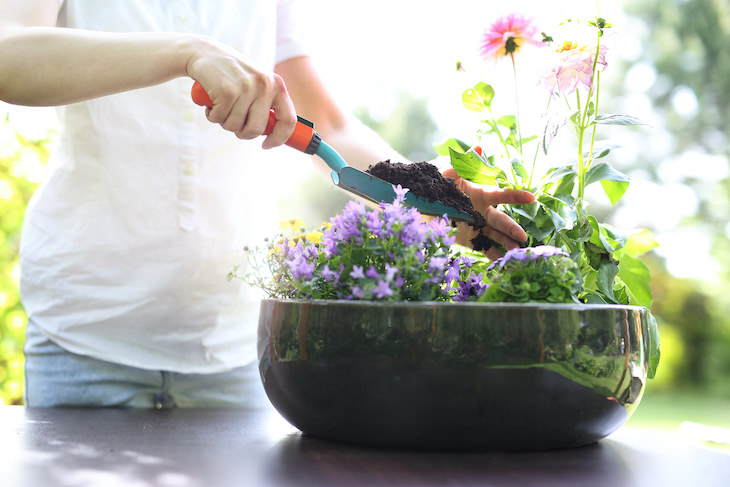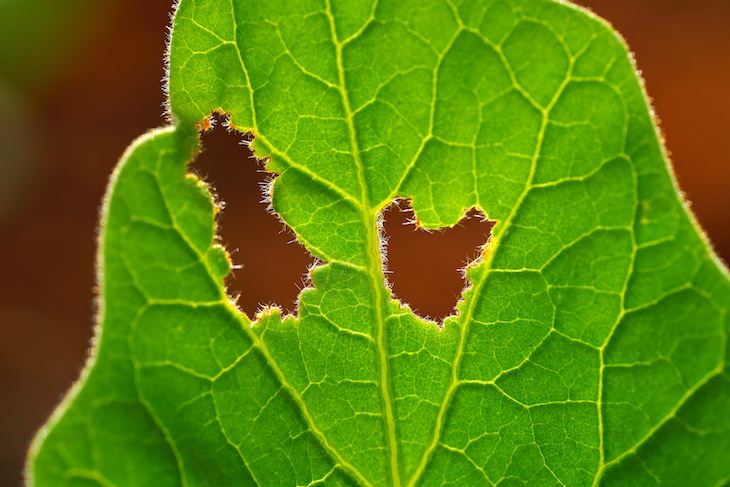
Caring for plants may look simple, but there are a few rules to remember and it takes practice like anything else in life. If you have a dying plant on your hands, don’t be too hard on yourself. It can happen to anyone and even with some of the most low-maintenance plants. Moreover, there is a good chance your sad-looking plant isn’t beyond help.
Just like humans can recover from sickness with the right help, a wilted plant can be repaired if you catch it in time and take the right steps. So before you give up, here are a few expert-recommended tips on reviving a dying plant.

Let’s start with the good news. Oftentimes, it may seem like your plant is a goner and all hope is lost. But if you take a closer look, it may not be the case at all. If the stem and roots appear healthy and alive, you might be able to save the plant.
The roots are a plant’s support system. They can provide a lot of valuable information about its overall health. Even if the more visible parts of the plant look brown and wilted, the roots may still be receiving enough nutrients and water to keep it alive. According to Jennifer Morganthaler, an agriculture instructor at Missouri State University, healthy roots should appear plump with white tips. If the roots show signs of life, the next step is figuring out what went wrong and how to revive your plant.
Different plants have different needs when it comes to water. These are the signs a plant is over or under-watered: if the leaves appear brown or yellow and wilted and the soil is moist, it means the plant receives too much water. Overwatering can directly affect the root and cause it to rot. If that seems to be the case, move the plant out of direct sunlight immediately and stop watering it until the soil dries out. If the soil is very soggy, you may need to repot your plant, on which we will expand later.

And what about the signs of a thirsty plant? The leaves will begin to look wilted and brown at the tips, and then turn completely brown, die, and drop off. The soil will be dry, cracked, and may pull away from the edges of the pot. The solution is water, of course, but it’s important to do it the right way. A quick method to revive a severely underwatered plant is to soak it in water for a few hours. Your plant should look happier and lusher within a day. From there on, it’s all about watering it regularly and making sure the water reaches down to the roots.
After taking the necessary step to revive an under or over-watered plant, it’s vital that you do the necessary research and learn the plant’s specific water needs, to prevent the problem from recurring.

To give a plant a second chance at life, you need to remove elements that hold back regrowth. If there are leaves that appear completely brown, you will need to get rid of them to allow new ones to grow instead. Simply snip them with a pair of plant shears or scissors. Usually, dead leaves will come off the stem easily, and in some cases, you can even pinch them off with your fingertips. However, if you feel you have to tug at them, opt for a pair of shears.
Related: 10 Indoor Plants That Thrive in Small Spaces

Just as it is important to trim dead leaves, the same goes for dead tissues on the stem. As you know, green equals healthy. So if you spot any bits that seem brown and shriveled, snip them off. Ideally, you’ll want to take it all the way back to the healthiest part of the plant. However, if the great majority of the stem is dead, leave at least two inches of it above the soil.

Just like water, light is essential for any plant, but the amount is key. While some plants prefer full and direct sunlight, others thrive in the shade. Blanched leaves are a telltale sign of too much light. On the other hand, plants that are not getting enough light may get spindly and stretched, or start dropping leaves. Depending on its state, a seemingly dead plant can definitely perk up once it’s relocated to an area that suits its lighting needs better.
If you’re unsure what those are, you can use an app like Flower Checker to identify the plant and get some essential care tips. To learn about other useful gardening apps check out our previous article Gardening Enthusiasts Will Love Using These Handy Apps.

A rule of thumb is that the volume of the plant should be about two-thirds above ground and one-third below ground. The soil level should be within an inch or two of the rim, depending on the pot size, so when you pour in water it can pool before seeping in. When you buy a plant that comes in a plastic pot, repot it right away. Plants are usually sold overgrown, they are not meant to live in these pots.
A few more signs that your plant needs repotting: the roots are coming out from the bottom of the pot, the leaves are starting to turn yellow from overwatering or too much light or your plant is starting to lose too many leaves (due to the plant being overcrowded and roots not being able to get enough nutrients).

A malnourished plant will exhibit weak stems or discolored leaves. Feeding your plants is especially important during the growing season of spring and summer. Two options of doing so are compost or fertilizer. Sometimes, simply repotting can be enough.“Soil can become depleted of nutrients over time, so repotting every few years is always a good idea.” says gardener and indoor plant expert Vickie Christensen.
If your plant still looks in a wobbly shape after repotting and you choose to enrich the soil with fertilizer, it’s best to start out slow. Most plants do best with a little fertilizer once or twice a month, during the growing season. Make sure to follow the specific brand directions carefully.

Infestation is a common problem for plants that can harm the quality of your their growth. Whiteflies are tiny, white, moth-like flies that collect in the leaves of infested plants. Other bugs look like, well, bugs! To get rid of them, gardening experts recommend opting for natural solutions, as harsh chemicals can hurt the plant.
Start by washing the plant with warm water, then wipe it down to remove as many bugs as possible. Follow up with a spray of horticultural oil or insecticidal soap, being careful to reach the crevices and the undersides of the leaves. Continue to dust and wipe the plant regularly.
Related: How to Identify and Manage 10 Common Plant Diseases

Losing hope can be easy when it looks like your efforts aren’t paying off. But remember - it took a while for your plant to reach this bad state of affairs, so it’s going to take time to revive it too. Be patient, and keep tending to your plant for a few weeks, then re-evaluate. It can take up to a month to see improvement or new growth, so don’t give up too soon!
Share these tips with those who have a green thumb!